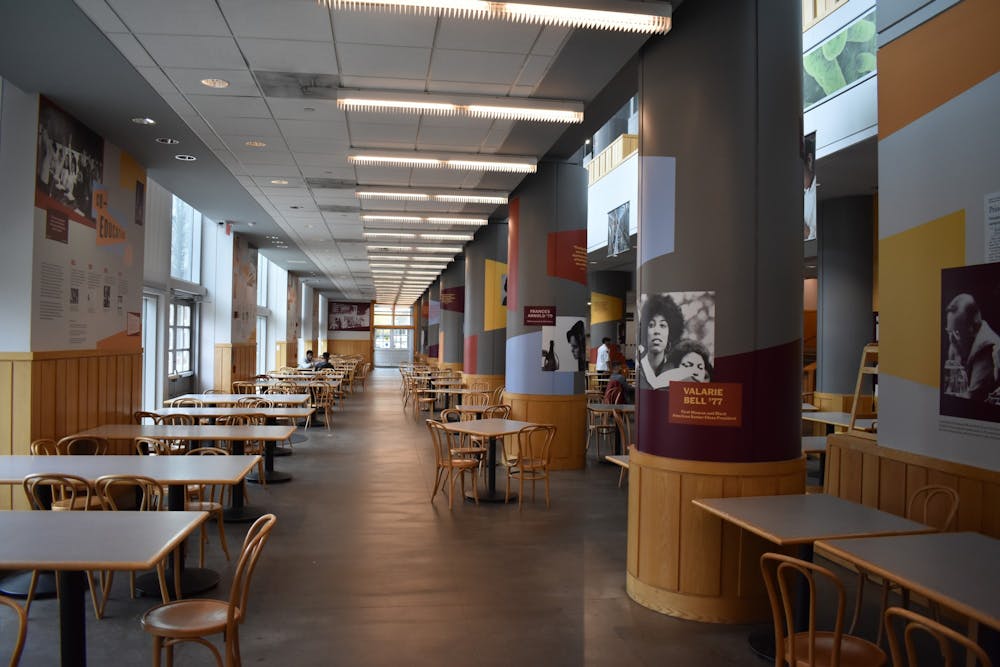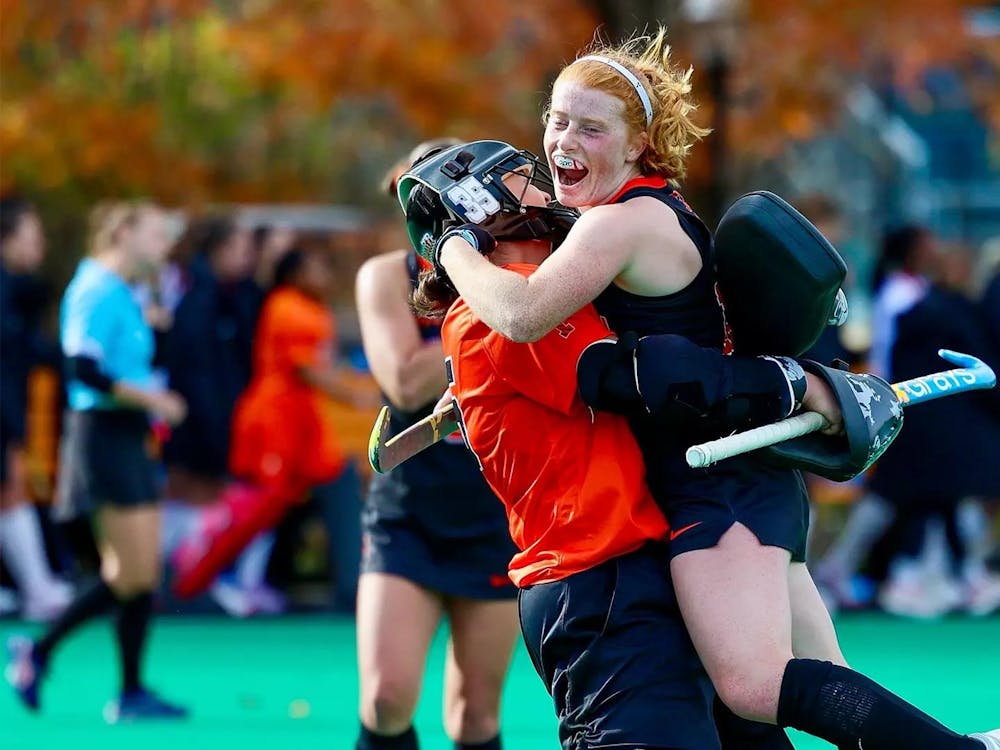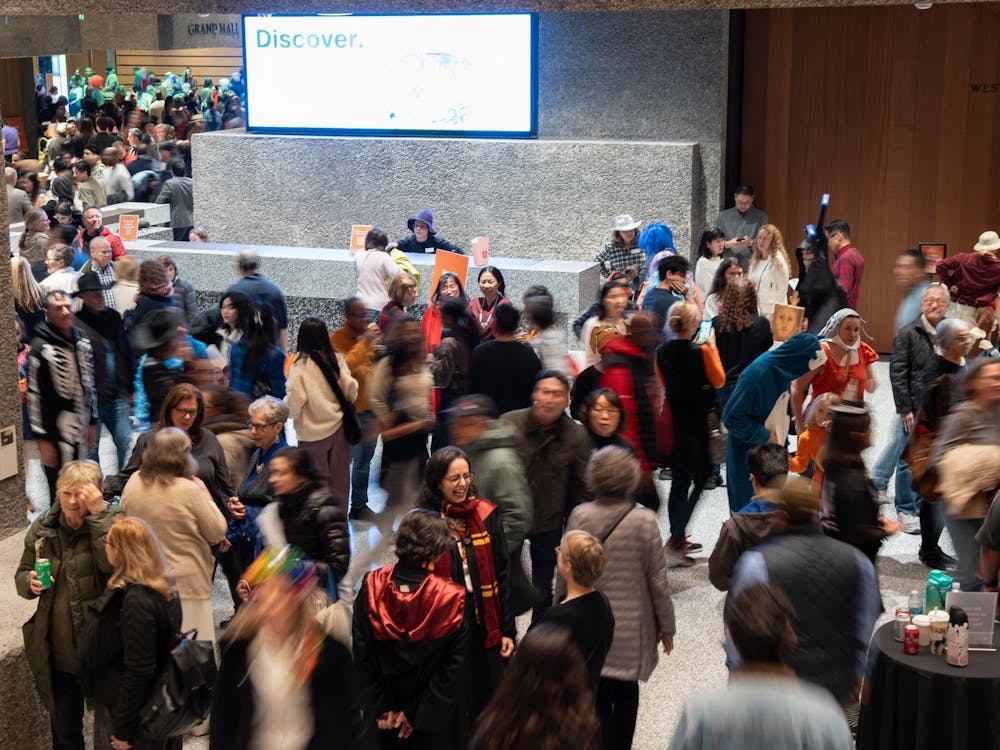Students have raised concerns about overcrowding in dining halls, particularly at lunch, following a reduction in late meal hours.
Late meal lunch at Frist Campus Center now begins at 2 p.m. on weekdays. Expanded 11 a.m. to 4 p.m. lunch hours were introduced temporarily in 2023 during campus construction to offset limited dining access. “With that work now complete, and expanded time between classes, the Frist Gallery Late Lunch program has returned to its standard hours of 2–4 p.m., Monday to Friday,” University spokesperson Ahmad Rizvi wrote.
Some students worry that crowding, not just access, will impede on the dining experience. The Class of 2026 began the University’s four year student body expansion, meaning class sizes are larger than ever before. The closure of Wilcox Dining Hall in Spring 2023 coincided with the expansion, putting more pressure on the remaining dining halls.
Students often flood to dining halls in prime locations near classes, such as Rocky-Mathey and Whitman-Butler Dining Halls. “It’s [RoMa] definitely overcrowding,” Lumina Zhang ’29 said in an interview with The Daily Princetonian.
Long lines and far distances lead some to skip lunch altogether, instead waiting for Frist late meal.
“It’s hard to find a place to sit, and it’s also hard to get the food itself,” Isabella Jolicoeur ’29, who frequently goes to Whitman Dining Hall for lunch, told the ‘Prince.’ Jolicoeur estimated that it takes her 10 to 15 minutes to get food.
Lincoln Peacock ’29 often does not eat lunch at normal hours due to the distance to the dining halls. “I have a weird amount of time where it’s not really worth it to go all the way to a dining hall, so I usually wait for late lunch,” he told the ‘Prince.’ On the few occasions Peacock has gone to dining halls for lunch, “it was super crowded,” he said.
“Frist is a really good place to have a meal option during normal times,” Peacock said.
Other students expressed that, depending on the time of day and distance from central campus, some dining halls such as Forbes Dining Hall and Choi Dining Hall appear less crowded. David Kim ’29, eats at Choi Dining Hall, where it is “pretty empty” during lunch. “I had no trouble finding seating or anything,” Kim told the ‘Prince.’
“Campus Dining has been monitoring and will continue to monitor traffic flow in all residential locations during lunchtime hours,” Rizvi wrote to the ‘Prince.’ Rizvi added that some dining halls have adapted their food stations to improve traffic flow during peak meal times.
The rollback of the program was made independent of budget cuts, Rivzi said.
“We recognize how popular Late Lunch has been for students, and we do understand that the shorter window may feel limiting. But there are other lunch options that offer flexibility,” Rizvi wrote, highlighting that the RoMa and Whitman dining halls serve until 3 p.m., while others close at 2 p.m.

Rizvi also pointed to the Center for Jewish Life, which offers lunch and dinner for all students, and Campus Dining’s Lunch to Go program, which provides bagged meals for pickup at dining halls and select retail locations on weekdays. The Lunch to Go program requires you submit a form specifying a pickup location no later than 5 a.m. on the day the lunch is requested.
On Sept. 29, the University eliminated the “independent” dining option and required upperclassmen living on campus to purchase a meal plan starting in the Fall 2026 semester, citing “ongoing budget reduction measures.” Even students with co-ops and eating club dining plans will be required to buy at least two meals a week if they live on campus, which were previously provided to upperclassmen for free.
In May, the Princeton Alumni Weekly reported that 325 upperclassmen were independent for the 2024–25 academic year. This change could mean that the number of students eating meals at dining halls might increase by around 10 percent starting next year.
“What needs to be worked on now is ensuring that there’s capacity at dining halls,” said Anuj Krishnan ’27, the University Social Life Committee Co-Chair, who frequently meets with Vice President for Campus Life Rochelle Calhoun to discuss campus dining.
“Students should be aware about what’s coming in the future: Hobson in 2027 means Forbes is going to close right after, and we’re gonna lose that dining hall as well,” Krishnan continued. “There’s always going to be this pressure on [Campus] Dining. It’s just about managing it.”
Sena Chang is a senior News writer and Features contributor for the ‘Prince.’ She typically covers town topics and campus unions. She can be reached at sc3046[at]princeton.edu.
Katelynn Lee is a staff News writer for the ‘Prince.’
Please send any corrections to corrections[at]dailyprincetonian.com.








